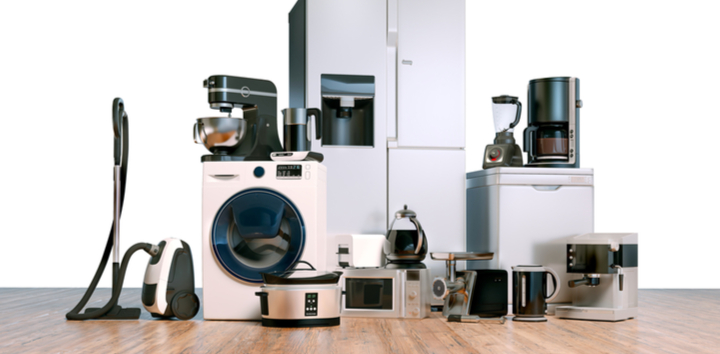5 Major trends in white goods that are on the way

26 Apr
2021
This is the era when refrigerator and washing machine can chat with you and the dishwasher can decide when dishes are done. There is a revolution in the white goods industry as the smart technologies such as Internet of Thingsmakes their way into the market.
According to Allied Market Research, the white goods market is expected to reach $1.03 trillion by 2027, growing at a CAGR of 7.8% from 2021 to 2027. Rise in population and urbanization, increase in spending on home improvement, and changes in lifestyles and growing disposable income drive the growth of the market.
The rise in R&D to integrate the newest technologies has opened a lot of doors of opportunities. Here are the major trends in the white good market that are on their way.
In a few years, it will be hard to name a device that is not connected to the internet. From refrigerator to dishwasher, almost all white goods are in pipeline to be connected to the internet. The boom in the penetration of smart phones has boosted the demand for IoT. Today, you can monitor products in the refrigerated remotely and the device can notify you if any product is expired.
The mantra of innovation is quite simple. If the user demands it, the market must supply. However, there is a huge difference in what younger generation demands and what older users expect. The older demands simplicity and young generation needs connectivity and similarity to touch-screen smartphone. However, older generation is more familiar with knobs and buttons and a mechanical feel to the appliance. The market players must take this difference of expectations into consideration while designing the device.
As the urbanization increase, more and more populations are moving into cities and living in a less space. Thus, the demand for compact appliances has increased. From oven to washing machines, if the appliances can fit into the small apartment, its demand is bound to increase. Moreover, the load capacity for washing machines has increase as most of the working population find it suitable to wash their clothes on the weekends. The companies have to find a silver lining to meet customer demands.
Over the last few years, people aim to taken major challenges such as rise in energy and water consumption. However, most are reluctant to compromise with functionality of the machine. Thus, manufacturers need to consider environmental impact without sacrificing the functionality and quality.
People have become more health conscious and are willing to pay extra bucks for healthier storage, preparation of food, and ways to caring for their clothes. Thus, the steam appliances and refrigeration devices will soon witness upgrade. More and more people are eating in while watching TV and mimicking chefs of well-known restaurants. In the future, white goods will be connected to the internet and kitchen appliances will download the recipes from the internet to help the cook.

Koyel Ghosh
Author’s Bio- Koyel Ghosh is a blogger with a strong passion and enjoys writing in miscellaneous domains, as she believes it lets her explore a wide variety of niches. She has an innate interest in creativity and enjoys experimenting with different writing styles. A writer who never stops imagining, she has been serving the corporate industry for the last five years.
Avenue: Entire Library membership of Allied Market Research Reports at your disposal
- Avenue is an innovative subscription-based online report database.
- Avail an online access to the entire library of syndicated reports on more than 2,000 niche industries and company profiles on more than 12,000 firms across 11 domains.
- A cost-effective model tailored for entrepreneurs, investors, and students & researchers at universities.
- Request customizations, suggest new reports, and avail analyst support as per your requirements.
- Get an access to the library of reports at any time from any device and anywhere.
Related Post
-
How are Submarine Cables Transforming Global Connectivity with Enhanced User Experience?
-
Endoscopy Procedures: Transformations in Techniques and Applications
-
AI-Powered Video Analytics: How the Product Actually Works for enterprises
-
Painting Robots: Transforming Precision Coating and Creative Applications
-
Innovations in Pharmacovigilance Systems Advancing Patient Safety
-
Understanding Edge Security: Keeping Data Safe Near the Source
-
Exploring the Use and Advancements of 3D Laser Scanners in Professional Applications
-
Reinforcing Industrial Controls with Smarter Tools and Training








